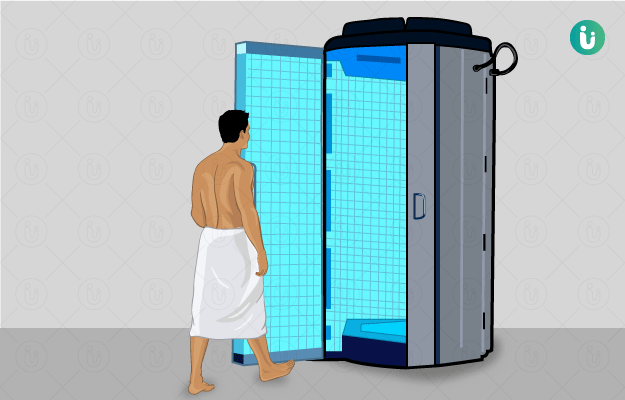Blood is a complex fluid. Blood looks the same in every human being but is totally different from the other. People have different blood types, which are commonly called blood groups. They are based on substances called antigens, which are present on a person’s red blood cells. The two most important antigens in blood typing are called A-B-O and Rh.
Each person has an ABO blood type, which means that every person would have a blood type which would be either A, B, AB, or O. This means that the antigen found in these people’s blood cells would be antigen A for blood group A, antigen B for blood group B, both antigens for the blood group AB and no antigen for blood group O.
Along with the antigens, each person has an Rh factor which is either Rh-positive or Rh-negative. This together forms a blood group in a person.
In some cases, when people do not have enough blood in their body, they may need blood transfusion. Blood transfusion is a medical procedure where donated blood or blood components are transferred from a healthy volunteer donor to a person in need, through an intravenous line (IV). The recipient may have low blood levels due to plenty of causes such as an injury or during surgery or due to a certain medical disorder.
Here in this article, we will talk about how and when a blood transfusion is done.
- When is blood transfusion required?
- How is blood transfusion done?
- What happens before and after a blood transfusion?
- What are the complications of a blood transfusion?
When is blood transfusion required?
Blood transfusion is required in the following cases:
- For people who experience blood loss during major surgery.
- For patients who experience serious injuries during an accident or natural disasters.
- For patients who suffer from any condition that affects red blood cells of the body such as sickle cell disease or thalassaemia.
- For patients who suffer from a type of cancer or are receiving cancer treatment that affects white blood cells including leukaemia (blood cancer), chemotherapy or stem cell transplants.
- For women who experience severe bleeding during childbirth.
How is blood transfusion done?
A blood transfusion is a very simple process nowadays. When the recipient goes to the hospital for a blood transfusion, the medical personnel will check their blood pressure, pulse, and temperature. If the vitals are fine, an intravenous needle is inserted directly into a vein and secured with a butterfly-shaped cannula. Then the blood which is correctly typed and matched for the recipient is transferred through an intravenous tube. The entire transfusion can take from 1 to 3 hours.
A medical personnel checks the blood pressure, pulse, and temperature of the recipient 15 minutes after the transfusion starts and again when the transfusion is complete.
The needle is then removed slowly and a gauge is placed at the site of needle insertion.
What happens before and after a blood transfusion?
When medical personnel receive donated blood, they test the blood type and the Rh factor. The 2 most important antigens in blood typing are called ABO and Rh.
If the donated blood matches the requirement, the recipient undergoes an antibody screening, which finds out if the antibodies in the recipient’s blood other than ABO and Rh. This means that if the donor has a blood group A+ve and the recipient also needs A+ve blood group, the recipient’s body would not consider the donated blood as an antigen, and so there would no antibodies present against that donated blood. However, in some cases, the recipient has some extra antibodies which can attack the donated blood even if the blood type is the same.
To check this, a drop of donor red cells is mixed with a drop of plasma from the patient. If the blood clumps, the patient has extra antibodies to a protein that is present in the donor unit. This is called cross-matching of blood. If there is no clumping of blood, it is approved for donation.
Before the transfusion: A member of the medical staff checks the blood pressure, pulse, and temperature of the recipient before starting the transfusion. No specific food or exercise is restricted before the transfusion.
After the transfusion: Once the transfusion is complete, the doctors again check the vitals of the recipient and remove the IV cannula carefully. If the recipient is completely fine, they are sent home or else they may have to stay in the hospital for the next 24 hours. The recipient may complain of some soreness near the site of IV cannula insertion. The recipient may have to come for regular follow-up checks after the transfusion so that the doctor can see the body’s reaction to the new blood.
What are the complications of a blood transfusion?
Blood transfusions are mostly very safe because the donated blood is carefully tested, handled and stored. It is screened for all the possible infections that the blood may possibly have. However, there is a slim chance that the body of the blood receiver may get mild to severe reactions due to the donor blood. The complications associated with a blood transfusion are:
- Allergies: even after getting the exact blood type, some people present with allergic reactions to blood received during a transfusion. These allergies can be seen in the form of hives and itching. Doctors usually treat this with antihistamines.
- Fever: Fever is a common sign seen after a person receives blood as it is the immune response of the body towards the transfused blood. However, if the receiver starts showing symptoms like nausea or chest pain, you must consult the doctor immediately.
- Acute immune haemolytic reaction: It is a rare reaction which is caused when the donor blood is not a proper match with the patient’s blood type. In this reaction, the recipient’s body starts attacking the transfused red blood cells. This attack can be dangerous as it can damage the kidneys. If the recipient starts showing symptoms like nausea, fever, chills, chest and lower back pain, and dark urine, take them to the doctor immediately.
- Delayed haemolytic reaction: This reaction is seen days or weeks after the transfusion takes place. In this reaction, the body starts recognising the transfused blood cells as antigens and destroys them slowly. The receiver usually shows no symptoms, but on testing the blood, the red blood cell count falls. The receiver may need treatment immediately.
- Blood-borne infections: Blood can transmit infections that are caused by bacteria, viruses, and parasites. But the risk of getting these infections through transfusions is very low. Infections that can be seen in a transfusion patient are hepatitis B, hepatitis C, Human Immunodeficiency Virus (HIV), Cytomegalovirus and syphilis.
- Graft-versus-host disease: Graft-versus-host disease is usually seen in patients who has a very weak immune system and gets transfused with a blood product that contains white blood cells. The white blood cells of the transfused blood start attacking the tissues of the patient who received it. The recipient may present with symptoms like fever, rash, diarrhoea and liver issues within a month of transfusion.
- Transfusion-related acute lung injury (TRALI): It is a rare complication of blood transfusion. In this reaction, there is a formation of noncardiogenic pulmonary oedema along with hypoxia that starts during or after a transfusion. It is most often seen within 1 to 2 hours of starting the transfusion but it can also occur after 6 hours of transfusion.
References
- National Health Service [Internet]. UK; Blood transfusion
- Cleveland Clinic. [Internet]. Cleveland, Ohio. A Patient's Guide to Blood Transfusions: Recovery and Outlook
- Cho MS, Sharma S. Transfusion-related Acute Lung Injury (TRALI). In: StatPearls [Internet]. Treasure Island (FL): StatPearls Publishing; 2020 Jan-.
- American Cancer Society [Internet] Atlanta, Georgia, U.S; Getting a Blood Transfusion.
- National Heart, Lung, and Blood Institute [Internet]: U.S. Department of Health and Human Services; Blood Transfusion
- American Red Cross [Internet]. Washington, D.C., United States; Blood Transfusion Process















